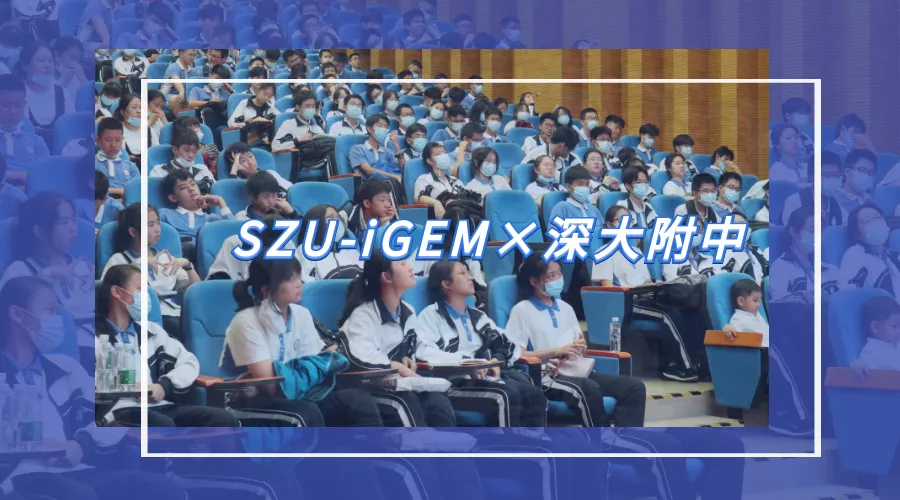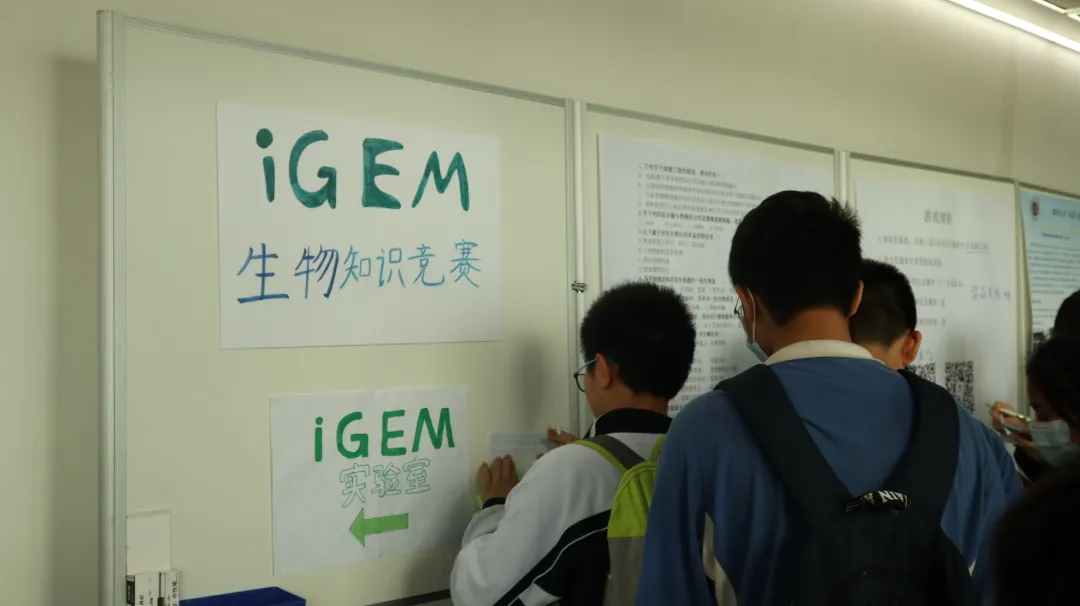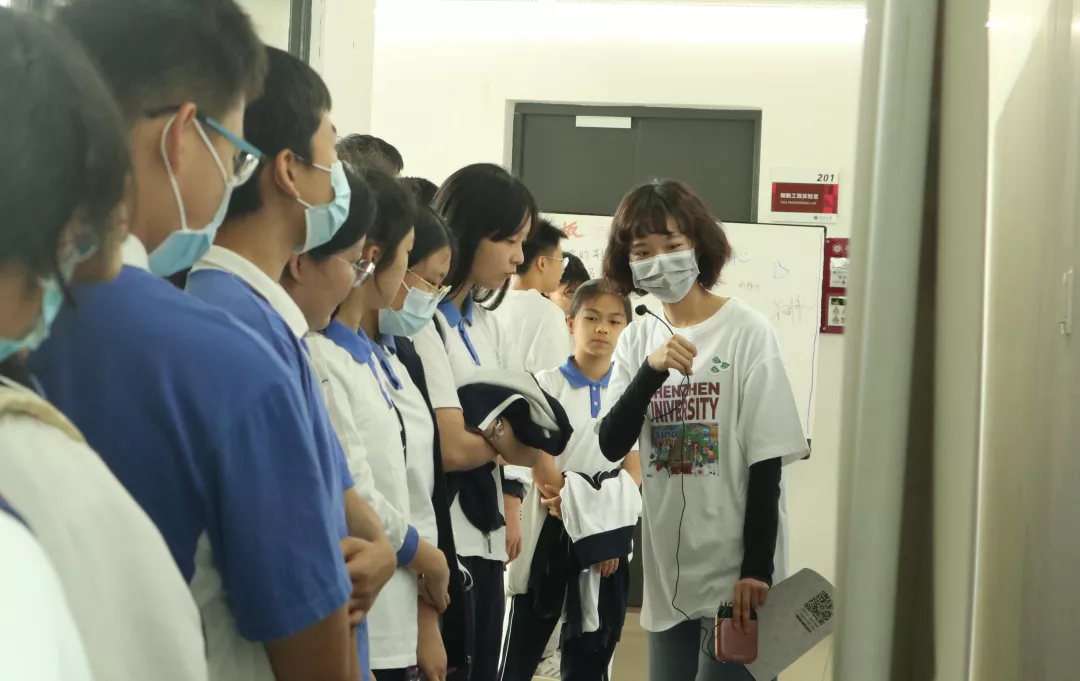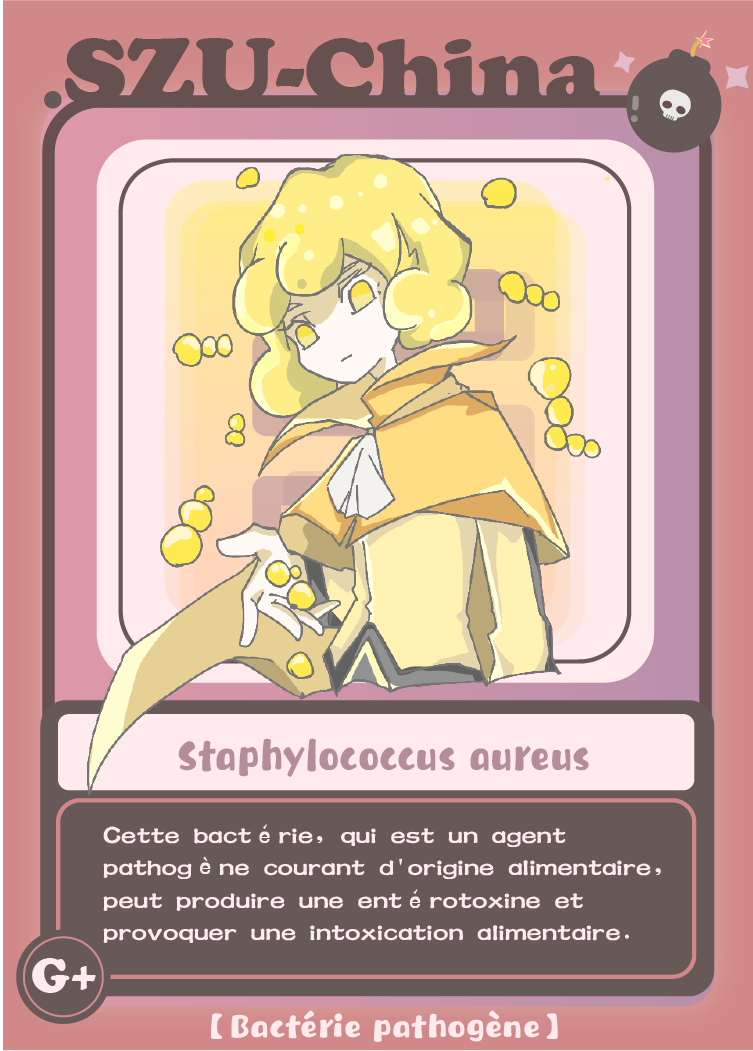
EDU&Public engagement























































Education and public engagement are essential to us. Therefore, we have put in a lot of effort, to ensure that people of and knowledge backgrounds are covered. We have designed various forms of educational activities. At the same time, we also produce a large amount of materials to support our various activities.
In education and publicity, we mainly focus on the following three topics:
Synthetic biology is a technology for engineering life systems, and it is very likely to give birth to the next biotechnology revolution. The attention and importance to synthetic biology will promote the better development of synthetic biology, and its effect will benefit the entire human world. Therefore, letting the public, especially young students, understand synthetic biology is the mission of iGEMer.
To this end, we did the following work:
- GreatProtein
- Shenzhen University, School of Life and Marine Sciences teach-in
- Series of project interpretation tweets
- Lab visit video
Before carrying out the knowledge of intestinal health and intestinal flora, we released the intestinal health questionnaire to the society to investigate the public's understanding of intestinal health knowledge and the necessity of popularization. Based on this, we wrote a questionnaire survey report, which proves that public education of intestinal health knowledge is imperative.
Intestinal health questionnaire report
To this end, we did the following work:
- Mid-Autumn Festival lantern riddle activities
- Educational activities in underdeveloped area
- IntestiNO
The incidence of IBD in China is still low, and there is a problem of insufficient awareness of IBD in society. The incomprehension caused by this phenomenon will affect the patient's social identity cognition to some extent, leading to anxiety and uneasiness of the patient group. Popular science education on IBD-related knowledge helps people with related symptoms to self-examine and treat them in time and allows IBD patients to get more love, attention, understanding, and support.
To this end, we did the following work
- Picture book
- Tri-folding brochure
- Patient story tweet
We can proudly say: "What can learning be?" which is the slogan we put forward in the education section!
Here are some highlights from this year's educational events:
- We have compiled a picture book, jigsaw puzzle and three-fold brochure on IBD for educational activities and patient education in hospitals.
- We designed and created the IntestiNO, a board game card based on the rules of UNO. In order to introduce the knowledge of intestinal health and intestinal flora to the players, we also translated it into dozens of languages with the help of teams from different countries.
- We designed a mobile phone game - GreatProtein. This will show the public how scientists rely on central principles to transform or create life, from genetic components to proteins. So as to popularize the knowledge of synthetic biology and achieve the purpose of public education.
- We have planned and carried out several educational presentations in kindergartens (Chaozhou), elementary schools (Shantou), middle schools (Shenzhen University Affiliated Middle School), and universities (College of Life and Marine Sciences, Shenzhen University). For each educational activity, we design different educational content and forms according to different audiences.
- We designed badges, card covers, key rings, masks, mousepads, puzzles and other exclusive souvenirs and organized a charity sale together with SUSTech_Shenzhen.
- In the Mid-Autumn Festival, a traditional Chinese festival, we combined intestinal health knowledge with lantern riddles and held riddle-guessing contests in the Fuguang Community of Shenzhen. Nearly 200 community residents came to participate.
- We create popular science content on multiple new media platforms such as the WeChat official account and bilibili video website. Educate people about the importance of IBD and call attention to IBD patients.

Fig.1 Target audience.

Fig.2 Deep Blue Charity Sale with SUST_Shenzhen.
The Deep Blue Charity Sale is a large-scale charity sale garden tour organized by Zhixin College of SUSTech, SUSTech Commonweal and Shenzhen University. It aims to help the public welfare by setting up unique charity booths for students.
The products sold in our booth are all peripherals designed by us, combining synthetic biology and laboratory-related items. We hope that while promoting synthetic biology, will also give everyone a preliminary understanding of our project.
For example, experimental instrument badges that you will be eager for a complete set of; the best-selling anime probiotic keychain; the SZU iGEM mask that everyone who sees it will want its link; a hand-made E. coli puzzle that you will want to mount; iGEM synthetic tickets that everyone loves.
Since this charity sale is held in SUSTech, the target consumer group is college students, so we chose these as the materials because they are both beautiful and eye-catching, and the price is affordable for college students. These cute little things are also more likely to be posted on social networks, hung on their school bags, or used. As a result, a secondary spread is formed, and the number of people who see these exquisite materials of SZU-iGEM will increase exponentially.
In the badge part, we focus on using some comic means to show the principles of molecular biology and related experimental operations, such as DNA transcription and translation, agarose gel electrophoresis, PCR, etc. We hope to arouse young people's curiosity and interest by animating this relatively "hardcore" science content. And we think that key chains are a very good way to spread knowledge among teenagers, and a good key chain can spread quickly among their peer groups. Therefore, we decided to anthropomorphize the core of our project, the intestinal flora, especially probiotics, and express them concretely in the form of animation.


Fig.3 Part of the badge.

Fig.4 Part of the key chain.
In this charity sale, we also promoted our mobile game GreatProtein. Those with high scores can buy our peripherals at a more favorable price. This attracted a lot of people to participate in our game!

Fig.5 Facial mask with our logo.

Fig.6 Intestinal flora puzzle.

Fig.7 iGEM synthetic tickets.

Fig.8 GreatProtein instructions.
The early childhood period is a critical period for healthy personality and intellectual development and for health education. Moreover, compared with adults, children have poor intestinal barrier function and are often prone to digestive diseases. Data shows that over 38% of children are affected by intestinal problems. Indigestion, abdominal pain, diarrhea, and constipation are common problems for children. For this reason, children's intestinal health education activities have become an indispensable part of our practical activities.
This summer, we went to two remote towns in Guangdong, China: Chaozhou and Shantou, and brought two educational activities for children in the countryside. We mainly educate children on gut health through three parts. In the first part, we tell children the importance of washing hands before and after meals in the form of storytelling and teach the seven-step hand-washing method, a scientific hand-washing step. In the second part, we divided the children into groups of 6 and conducted a team-made intestinal flora puzzle competition. The children were in high spirits and cooperated to complete the puzzle. Finally, under our guidance, they learned about the concepts of bacteria and viruses and learned the existence and significance of different flora in the intestine. In the third part, we took out our self-made intestinal health picture book to share with children and explained to them how to prevent common digestive system diseases. In rapturous discussion and applause, we ended the course happily.

Fig.9A Group photo of Shantou education activity.

Fig.9B Group photo of Chaozhou education activity.

Fig.9C Puzzle game.

Fig.9D Reading Picture Books.
Our materials are also designed according to the cognitive characteristics of preschool and school-age children, and children love the lively and cute style. They treasured these little gifts and said they would take them home to show their parents. We will also print our official account QR code stickers for children, hoping to guide their parents to pay attention to our official account and get in touch with more information about us.

Fig.10 Cover of the picture book.

Fig.11A The intestinal flora puzzle.

Fig.11B The original picture of intestinal flora puzzle.

Fig.11C The original picture of intestinal explorer puzzle.
Junior high school students are at an essential stage of life. With the help of biological learning, they can deepen their understanding of biological knowledge and promote the generation of life consciousness. This may affect their perception and performance of the world in the future. Therefore, we believe that it is necessary to guide junior high school students to establish a correct understanding of biology as soon as possible.
The Affiliated High School of Shenzhen University is the only high school affiliated with a comprehensive university in Shenzhen, with about 2,000 students. At our invitation, they visited our laboratory. We have carefully designed activities such as biology quiz competitions, laboratory visits, iGEM project presentations, etc.

Fig.12 Tweet cover of Laboratory Open Day.
In the biological knowledge answering area, we guide students to think and answer.


Fig.13 Synthetic Biology Quiz.
When we visited the laboratory, we drew up the introduction and brief description of the commonly used instruments and introduced and explained our commonly used biotechnology to them.





Fig.14 Laboratory instrument learning.
Finally, we present our selected iGEM projects to students and tell them how iGEMers use the knowledge of synthetic biology to solve problems in life. We hope to help them establish the connection between synthetic biology and real-world applications.


Fig.15 iGEM orientation meeting.
Of course, we have also carefully designed some prizes for students visiting our lab. For example, the card sleeve in the figure below. We apply some more abstract and design elements to encourage teenagers to bravely explore the unknown world and discover the truth of the world.


Fig.16 Card sleeve.
The School of Life and Marine Sciences of Shenzhen University has strong support from the government and outstanding students. To introduce iGEM to the freshmen of the college, increase their knowledge and interest in synthetic biology, and let them know about scientific research and laboratory experience at the beginning of their enrollment, we brought them a presentation. At the presentation meeting, we introduced the entire competition process, told about the development history and significance of synthetic biology, and introduced the exciting projects done by the previous team, which caused many students to exclaim.


Fig.17 iGEM presentation.
When we were brainstorming in early March of this year, we designed a mobile phone game called GreatProtein. This game demonstrates to the public how scientists rely on the central dogma, from genetic elements to the production of proteins, to create life, so as to popular synthetic biology. We believe that this game mechanic is an excellent example of the modular engineering of synthetic biology, so it has great potential to be a powerful tool for disseminating iGEM in the future.
In April, at the Deep Blue Charity Sale , we organized a game competition session at the bazaar site and recommended this game to the public. At the Conference of China iGEMer Community (CCiC), we showed our game and its content to other teams, and it was also well received by the teachers and students present.

Fig.18 People have shown great interest in GreatProtein.

Fig.19 GreatProtein guide.

Fig. 20A GreatProtein instructions.

Fig. 20B GreatProtein game interface.

Fig. 20C GreatProtein game over interface.
IntestiNO is a card game of popular science intestinal flora launched by our team. Following the basic gameplay of the traditional UNO card, IntestiNO emphasized the concept of intestinal flora in our team's IBD project this year. We have drawn vivid and lovely anthropomorphic bacteria and hope that players will pay attention to the existence and significance of intestinal flora during the board game. We use this to explain to the public one of the concepts of our project: understanding the importance of intestinal flora and paying attention to intestinal health, we still have a long way to go.
We are considering that UNO has a lot of players all over the world. And for now, IBD has patient groups worldwide, and we hope that our products have a broad audience. So we translated IntestiNO into multiple languages with the help of many other teams. Currently available languages include English, Japanese, French, Dutch, Kazakh, Norwegian, Chinese, Russian, Korean, Bulgarian, Turkish, Indonesian and Marathi. We also invited the Propaganda Department of the Student Union of our college to participate in our card sorting and layout work. Finally, we distributed the translated cards to the teams of various countries, hoping they could complete the spread of IntestiNO in their countries.
IntestiNO Card description and rules
List of translation teams:
ACIBADEM_ISTANBUL, UBrawijaya, Bulgaria, Korea_HS, Leiden, MIPT_MSU, NCKU_Tainan, NTNU-Trondheim, NU_Kazakhstan, UParis_BME, UTokyo, IISER-Pune-India

Fig.21 Logo of translation teams.




Fig.22 The original picture of some of the IntestiNO.

Fig.23 The finished product of IntestiNO card.

Fig.24 The game table mat of IntestiNO cards.
The Mid-Autumn Festival is one of the most important traditional festivals in China. The Mid-Autumn Festival uses the full moon to signify the reunion of people. It is a longing for a good harvest and happiness to miss the hometown and family members. Now it has become the most precious cultural heritage of the Chinese nation. Lantern riddles and lantern riddles guessing are traditional forms of folk, cultural and entertainment activities. In ancient times, people wrote riddles on paper strips and pasted them on colourful lanterns for people to guess.
During the Mid-Autumn Festival, we cooperated with the Volunteer Association of our college to organize a Mid-Autumn Lantern Riddle event in the Fuguang community. We combine the mysteries and answers of lantern riddles with intestinal health and knowledge. While carrying forward the traditional culture of lantern riddles during the Mid-Autumn Festival, we also popularize intestinal health knowledge among residents. We hope to use this to call on people to pay attention to their gut health even with a richer diet. The event received wide acclaim, and nearly 200 residents came to the site to participate in our event.





Fig.25 Photos of the Mid-Autumn Festival Lantern Riddle Event.
In preparing the materials, we tried our best to restore the rules and details of the traditional lantern riddle activities. We posted coloured paper and wrote the conundrum with Chinese calligraphy. Everything is antique. Who would have thought that this is such a close activity combined with modern scientific knowledge!

Fig.26 Tickets for the Mid-Autumn Festival Lantern Riddle Event.

Fig.27 Group photo of SZU-iGEM and volunteers.
WeChat is one of the most popular social tools in China. It has covered more than 94% of China's smartphones, with 806 million monthly active users! The WeChat official account is a content publishing and promotion platform that relies on WeChat. In the past year, the szuigem official account has released a total of 26 tweets, including a series of project interpretation tweets, IBD disease popularization and patient story sharing, iGEMer daily records, etc. The total number of readings was nearly 10,000 times.
1. Project interpretation series: First, we hope to better design our projects this year by learning from outstanding projects. Secondly, it can provide other participating iGEM teams with a convenient way to understand high-quality projects. Thirdly, we look forward to introducing these interesting projects to let the public know more about iGEMer’s novel ideas and their concerns about society, humans, iGEM, and synthetic biology.

Fig.28 Cover of the Project Interpretation tweews.
2. IBD disease science popularization and patient story sharing: During the human practice activities related to inflammatory bowel disease, we have contacted many patients. Approaching their lives, listening to their voices, we have a lot of feelings. The patient story comes from the personal experience of an IBD patient, told by him and recorded by us. We hope that we can arouse public awareness of this disease, arouse more people's attention to IBD patients, and bring love and help to IBD patients through our efforts.
On May 19, 2021, World Inflammatory Bowel Disease Day, we posted a tweet as follows.

Fig.29 Cover of the World Inflammatory Bowel Disease Day tweet.
After interviewing a Crohn’s disease patient, we obtained his consent and recorded his story with IBD in a non-fictional way.
Translation of the tweet:
3. IGEMer's daily record: "Record-make our work visible." Because a large part of the people who follow our public account are college students from Shenzhen University, we hope that we can share our daily activities in the official account to understand how the members of the iGEM team usually get along and work. A relaxed, happy, serious and tense working environment and partnership may be attractive, allowing more young students interested in the field of synthetic biology to pay attention to iGEM, understand it and even participate in it!



Fig.30 Tweets of the iGEMer's daily record.
To let people know about IBD, we collected credible information after reviewing it by clinicians and compiled a picture book.
In the tri-folding brochure, we also selected several issues that are most concerned by IBD patients. For example, how should IBD patients at different stages manage their diets? We hope to resolve their questions as much as possible in this way.
We took the picture book and the tri-folding brochure to Shenzhen Southern University of Science and Technology Hospital for free access by patients in the Department of Gastroenterology.


Fig.31 Brochures and picture books placed in hospitals.
The PDF source file of the picture book
The translation PDF source file of the picture book


Fig.32 The tri-fold brochures.
The translation of tri-fold brochures




